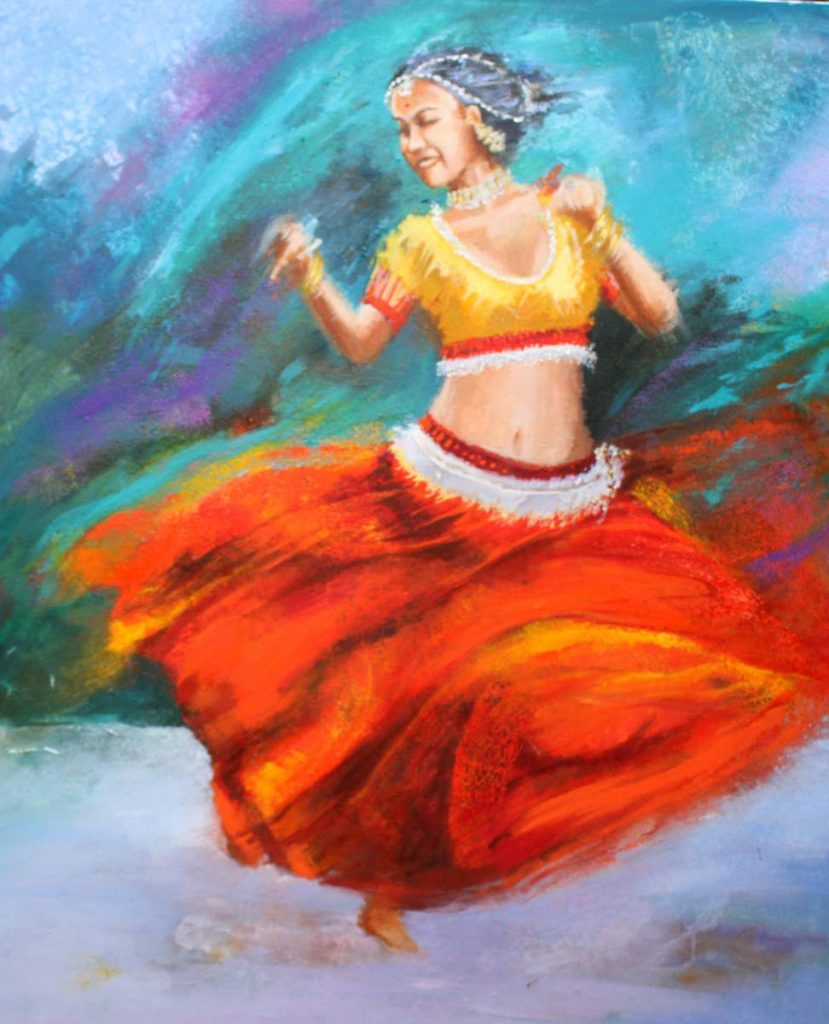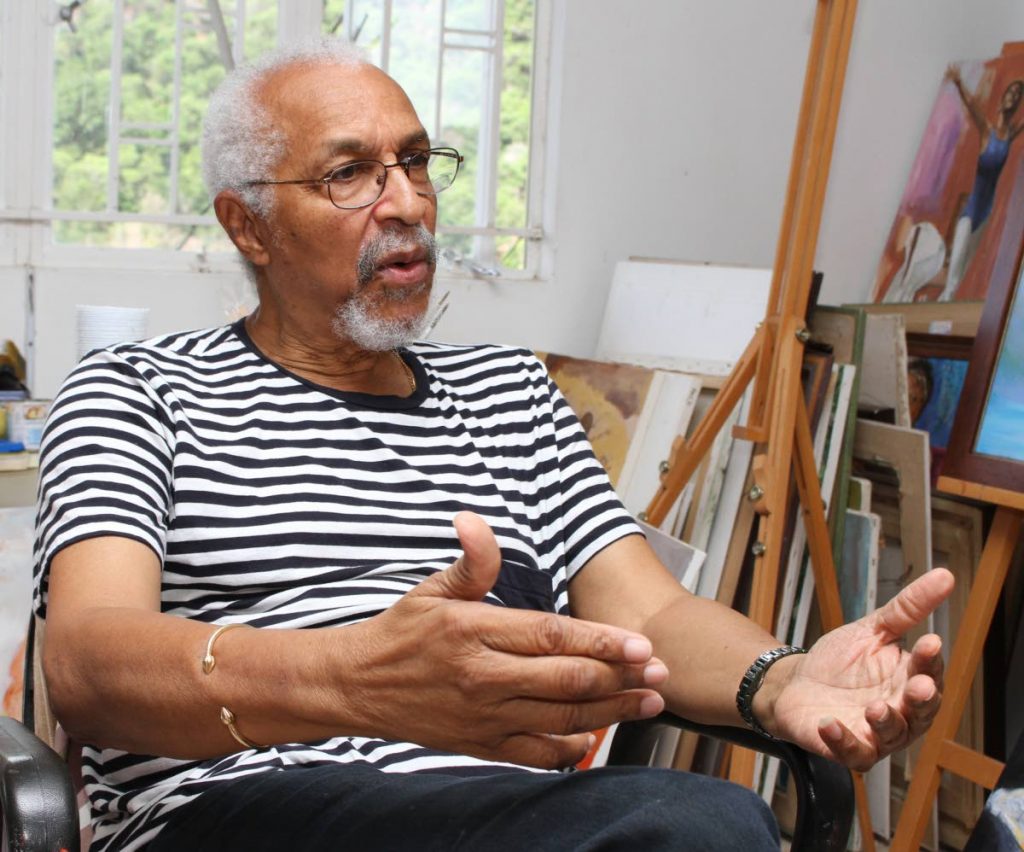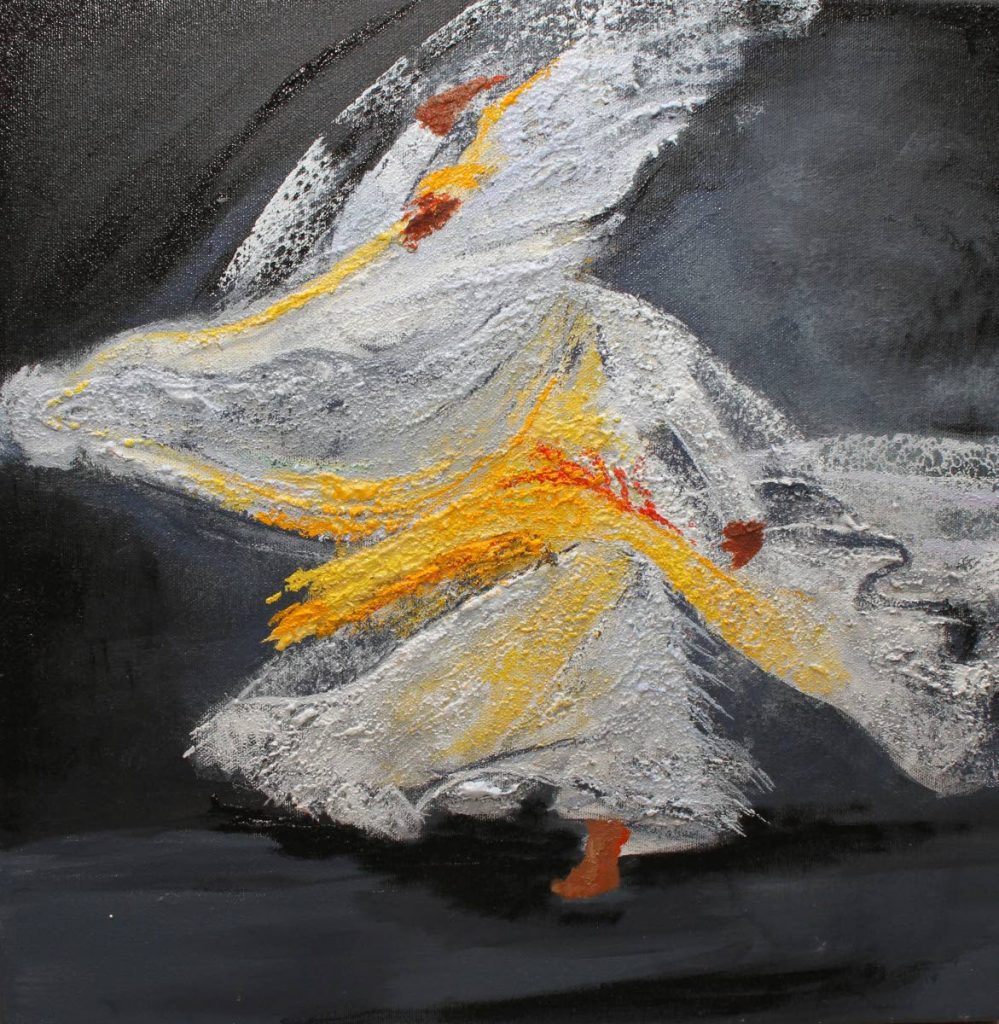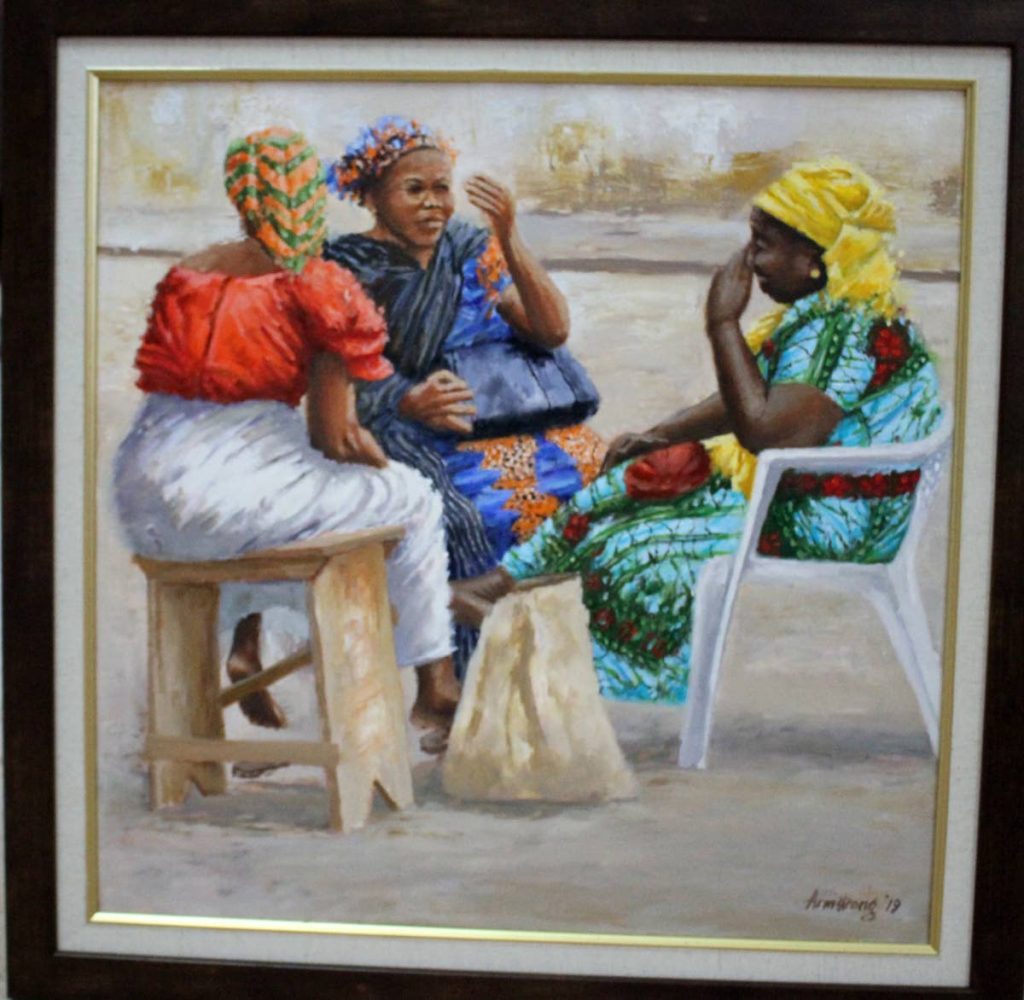Tobago to the world

When looking at some of the pieces in Tobagonian artist James Armstrong’s new exhibition it is almost as if the subjects of the paintings move of their own accord.
The visible strokes and layers of paint create texture and the illusion of movement. The use of colours, from rich to pastel, light and dark, and undefined edges, also give the paintings a dream-like quality while still providing enough detail for the subjects to seem realistic.
Armstrong describes himself as a representational artist. He said his work has some elements of abstract art but a person can usually tell what he is trying to depict. He asked that people remember he has a certain background, history, and narrative to tell and not pigeonhole him.
Tobago to Africa to Asia Together is Armstrong’s seventh solo exhibition. The 45 paintings, mostly oil on canvas, will be on display at 101 Art Gallery in Newtown until November 13. He said they depict scenes from the two continents and TT all through his eyes.
For example, he said, his piece Buy Nuts From Meh Nah shows a female African nuts vendor. He said people selling nuts is not something he saw in Africa but women in the streets there were always selling something. He used the “nuts vendor” as the theme and gave the subject Nubian features and the familiar brown paper bag full of nuts.
He said as a youngster he did not like to shell pigeon peas, so Pigeon Peas Day depicts a youngster who obviously has no intention of helping his mother shell peas.

“Perhaps that’s one of the reasons I’m not very much into abstraction, to non-objective art. There’s just so many stories for me to tell in my work that I always try to depict what’s happening in my environment.”
Many of his paintings portray dance as, he said, he is fascinated with movement. He said he continues to experiment with different techniques including glazing, sponging, aggregate, and bleeding to emphasise movement and ensure it does not look as if the subject is stuck on the canvas.
For this exhibition he said he tried to “tone down” the colours and work with different palettes, as he usually uses colours other artists are afraid to use although those vibrant colours are everywhere. “Whenever I paint I approach it with a new vision, a new intent. It might be the same subject matter but a whole different treatment.”
Armstrong said he is always interested in cultural activities and that theme permeates his work. “I grew up in a house of culture. My aunt was the cultural officer in Tobago so I had the opportunity to go to all the cultural events, I would participate in all the folklore stuff and so on. So, I was very familiar with customs and culture in Tobago at the time.”
His love of art began by watching his grandmother, a teacher at a kindergarten, who often created illustrations for her student. He started drawing as well and began painting by age 12. When he was 15 his aunt, Eileen Guillaume, introduced him to artist Dr Edward Hernandez. They started painting together and in 1961 became two of the founders of the Tobago Art Group.
Although Armstrong never studied art at school Hernandez encouraged him to do the A-Levels art exam. “I did it and passed with flying colours. I was elated. I said, ‘Okay. I’m going to be an artist!’ So, I intensified my painting and had my first one-man art exhibition, which had about 45 pieces, at the Scarborough Library in 1965. And of the 45 pieces I sold only one piece and that depressed me a bit.”

In his disappointment, he focussed on something “more technical” as a career. Although he still painted, he studied interior design at Ryerson University and Humber College in Canada. He then switched to environmental design at the Parsons School of Design in New York. After graduating from Parsons in 1972 he received a scholarship to Columbia University, New York, to study for a masters’ degree in urban and regional planning.
During that time, he applied for a travel scholarship to West Africa to study the communities there. He recalled waking up on his first day at the University of Ghana at the campus in Legon to the sound of drumming, which reminded him of Tobago. He followed the sound and found students of the creative arts programme dancing.
He said bele has a flair that is more about the movement of the arms and dresses. However, the dances he saw were more about body movement. He was captivated and began sketching and painting to capture the movements. His interest in capturing movement never waned and he continues to improve his techniques.
Armstrong – a former independent senator – visited four African countries while on the travel scholarship and searched out dancing wherever it happened. He was also drawn to African art which he eventually studied and taught part time at Columbia and at the John Jay College of Criminal Justice.
In 1976, he moved to West Africa to work at the United Nations Centre for Human Settlements in the field of developmental planning. The job allowed him to travel around the continent extensively which deepened his interest in African art and culture.
In 2001, after 25 years with the UN, Armstrong chose early retirement to concentrate on his art. His first solo exhibition on his return to TT was called Tobago to Africa and Back. “It was very interesting to see the progression, the difference in the style from my earlier paintings, but the themes were more or less the same. I always painted what was happening around me.”
While working for the UN, he also visited parts of Asia, specifically India, Bangladesh, and Pakistan, for work. There he attended a variety of cultural shows and events.

“In my mind I realised, although I grew up hearing this music, I lived in San Juan for a while from age seven, I never really paid attention... It dawned on me, although I’ve done all of this travelling and I have been exposed to cultures in the US, Africa, Europe, Asia and so on, in TT you could go anywhere and experience a lot of this stuff. I could stay right here in Trinidad and have that experience.”
He said he has travelled to over 140 countries and could find something in TT that represented most of those places. The revelation caused him to pay more attention to his environment and culture.
“Apart from the major metropolitan cities in the world you don’t find that. As Trinbagonians we don’t recognise this is one of the best countries in the world! I’m not prepared to live anywhere else. I find so much here to paint. I don’t have to leave and go anywhere.”
He added that TT is one of the most creative countries in the world, but it has not begun to explore the introduction of a sustainable developmental programme to diversify the economy.

“We have not done anything with it because we don’t know what to do with it. We have a very academic approach to the creative industries but when we get to the point of doing something to capitalise on all of this creativity, that mostly came from the streets, we are stuck. We keep talking about it over, and over again but not really developing the infrastructure and superstructure and so on to really transform the industry.”
He stressed that people should not do any form of art because they want to be a professional photographer, architect or designer. Instead, he said it should be about the creative process – about innovation, exploration, and ideas – so that if someone said ‘that’s not how it should be done’ or ‘something like that has never been done’ artists should ask “Why not?” and explore it.
PHOTOS BY ANGELO MARCELLE


Comments
"Tobago to the world"